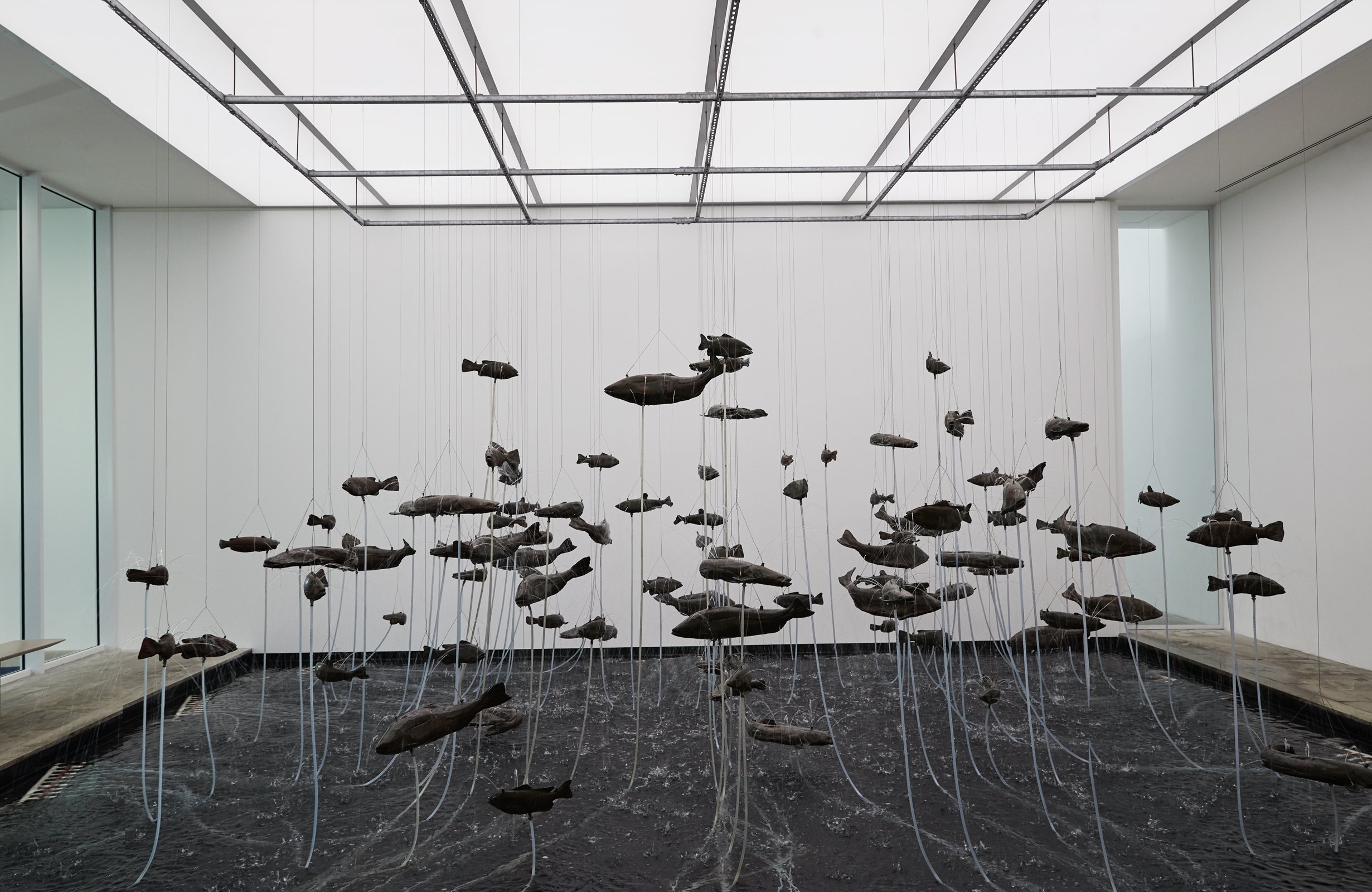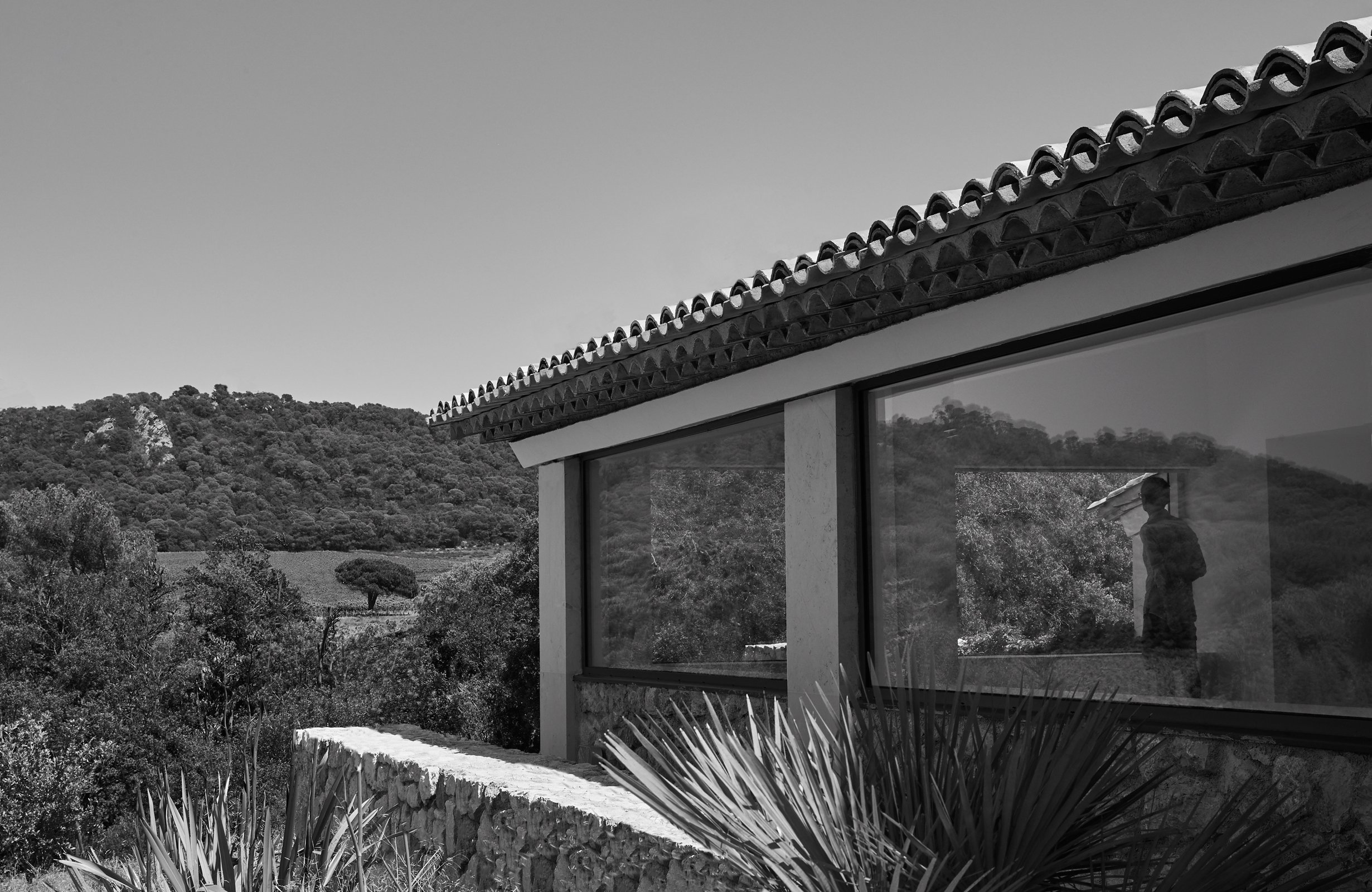Contemporary Modern
Category: Art & Architecture
In art history, a distinction is made between the modern and the contemporary. Modern is a historic era that occurred between the early modern and the postmodern. Contemporary is what is happening today, and thus the concept is transient and ephemeral. We’ve visited three museums dedicated to either the modern or the contemporary, or at times, to the blurred area where the two meet.
Tate Modern, London
Tate Modern houses the United Kingdom’s national collection of international modern and contemporary art. It’s located in the former Bankside Power Station, in the Bankside area of the London Borough of Southwark. Originally, the power station was designed by Sir Giles Gilbert Scott, who also planned the Battersea Power Station.
Located directly across the river from St. Paul’s Cathedral, it was built in two stages, between 1947 and 1963, but closed in 1981. Prior to redevelopment, the power station was a long, steel framed, brick clad building with a central, 99 metres tall chimney. For many years, it was at risk of being demolished by developers. Many people campaigned for it to be saved, and in 1994, the Tate Gallery announced that Bankside would be the home of the new Tate Modern.
After a competition, it was decided that Herzog & de Meuron were the winning architects. The most obvious external change was the two-storey glass extension on one half of the roof. Much of the original internal structure remained, including the cavernous main turbine hall. The museum has later expanded, in order to acquire more space.
Three circular, underground tanks have been turned into display spaces and facilities areas. A ten-story tower was built above the oil tanks. The original western half of the Switch House (currently named Blavatnik Building) was demolished to make room for the tower.
Tate Modern is one of the largest museums of modern and contemporary art in the world. There is no admission charge for access to the collection displays (which take up the majority of the gallery space). The main collection is thematically organised.
Many prominent artists have exhibited commissions in the Turbine Hall, including Louise Bourgeois, Anish Kapoor, Olafur Eliasson and Carsten Höller.
The Design Museum, London
London’s Design Museum might not have the most elaborate name, but it does state exactly what it is. Founded in 1989 by Sir Terence Conran, the museum serves as a meeting point for the design industry, education, and the public.
The aim is to promote awareness of design in education, industry, commerce, and culture. In 2016, the museum relocated to what is best described as a contemporary landmark in Kensington (after having been housed in a converted 1940s banana warehouse in Shad Thames). In 2018, it was awarded European Museum of the Year.
The new site was already a grade II listed building, but had been vacant for more than a decade.
John Pawson and his design team were responsible for the museum’s new interiors, while OMA were responsible for the overall master plan.
The museum welcomes more than 700,000 visitors per year to its 10,000 square metres large space. For those wanting to learn more, the museum offers a Master’s programme in Curating Contemporary Design, in partnership with Kingston University.
The programme is contextualised by the ongoing design research conducted at the museum, involving both historical perspectives and contemporary issues. This also means that many exhibitions are research based, as the critical perspective permeates many aspects of the museum.
The collection consists of over 3000 objects telling the story of how design has evolved, but there is also a Future Observatory research team, focusing on shaping the objects of the future.
The team works in partnership with the Arts and Humanities Research Council, coordinating over 140 research projects and in affiliation with researchers representing over 100 higher education design institutions across the UK.
Villa Carmignac, Île de Porquerolles
From above, Île de Porquerolles looks like a croissant, a suitable shape for a place so decidedly French. Not as easily accessible as mainland Côte d’Azur, it welcomes fewer foreign tourists, and so the island vibe tends to skew towards summer casual rather than holiday chic. The main part of Villa Carmignac is an old farmhouse, with the addition of 2,000 square metres of exhibition space, surrounded by a sculpture garden.
For those who think they recognize the villa, you might be right: Jean-Luc Gordard’s hit film “Pierre le fou” from 1965, starring Jean-Paul Belmondo and Anna Karina, was shot here. In the 1980s, architect Henri Vidal turned the farm into a villa. Many years later Vidal – otherwise most famous for having designed the Museum of Modern Art in Nice – invited Édouard Carmignac to the estate to attend a wedding. The rest is part of French art history.
Having immediately fallen in love with the place, Carmignac decided to set up a foundation with the villa as its base, dedicated to contemporary art and photojournalism. The foundation was created in 2000, and includes an impressive collection of contemporary art, containing more than 300 works, including 17 pieces by Roy Lichtenstein (which makes it the largest private Lichtenstein-collection in France). Other prominent artists featured in the collection include John Baldessari, Sandro Botticelli, Jean-Michel Basquiat, Sterling Ruby, Urs Fischer and Andreas Gursky.
The Carmignac Photojournalism Award is organised annually and the recipient is awarded 50,000 euro, an exhibition and a catalogue.
As the villa was built in the heart of a National Park, it was strictly forbidden to add further construction to the existing house, and so the art galleries have been built beneath the surface, seemingly without modifying the existing house’s contours. At the centre of the villa is an aquatic ceiling, which lets in natural light and illuminates these “underwater” spaces.
The surrounding park is an artwork in itself. Designed by Louis Benech, the underlying philosophy was to, “respect and make known the singular local biodiversity, thus presented and preserved thanks to the work of the Port-Cros National Park”. Pioneer and endemic plants, such as the Hyères’ lavender trees, the Needle-leaved Broom and Serapias orchid, have been preserved here.
The large park has also been replanted with numerous olive trees, and in the northern plain is now a small orchard. Other plants in the garden include eucalyptus, mimosa and various citrus trees (such as tangerines, organs and lemons).
Artists from all corners of the world – such as Jeppe Hein, Jaume Plensa, Ed Ruscha and Cornelia Konrads – have been invited to create site-specific artworks, delicately placed among the garden’s many flowers, bushes and trees.


















